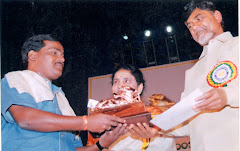Narrative
A narrative is a concept, composed and delivered in any medium, which describes a sequence of real or unreal events. It derives from the Latin verb narrare, which means "to recount" and is related to the adjective gnarus, meaning "knowing" or "skilled”. The word "story" may be used as a synonym of "narrative", but can also be used to refer to the sequence of events described in a narrative.
Conceptual issues
Semiotics begins with the individual building blocks of meaning called signs and studies the way in which signs are combined into codes to transmit messages. This is part of a general communication system using both verbal and nonverbal elements, creating a discourse with different modalities and forms. In On Realism in Art, Roman Jakobson argues that literature does not exist as a separate entity. He and many other semioticians prefer the view that all texts, whether spoken or written, are the same except that some authors encode their texts with distinctive literary qualities that distinguish them from other forms of discourse. Nevertheless, there is a clear trend to address literary narrative forms as separable from other forms. This is first seen in Russian Formalism through Victor Shklovsky's analysis of the relationship between composition and style, and in the work of Vladimir Propp who analysed the plots used in traditional folktales and identified distinct functional components. This trend continues in the work of the Prague School and of French scholars such as Claude Lévi-Strauss and Roland Barthes. It leads to a structural analysis of narrative and an increasingly influential body of modern work that raises important epistemological questions: What is text? What is its role in the contextual culture? How is it manifested as art, cinema, theatre, or literature? How are poetry, short stories and novels of different genres?
Literary theory
General purposes in Semiotics and Literary Theory, a 'narrative' is a story or part of a story. It may be spoken, written or imagined, and it will have one or more points of view representing some or all of the participants or observers. In stories told verbally, there is a person telling the story, a narrator whom the audience can see and hear, and who adds layers of meaning to the text nonverbally. The narrator also has the opportunity to monitor the audience's response to the story and to modify the manner of the telling to clarify content or enhance listener interest. This is distinguishable from the written form in which the author must gauge the readers likely reactions when they are decoding the text and make a final choice of words in the hope of achieving the desired response.
Whatever the form, the content may concern real-world people and events. This is termed personal experience narrative. When the content is fictional, different conventions apply. The text is projecting a narrative voice, but the narrator is ontologically distant, i.e. belongs to an invented or imaginary world, and not the real world. The narrator may be one of the characters in the story. Roland Barthes describes such characters as 'paper beings' and fiction comprises their narratives of personal experience as created by the author. When their thoughts are included, this is termed internal focalisation, i.e. when each character's mind focuses on a particular event, the text reflects his or her reactions.
In written forms, the reader hears the narrator's voice both through the choice of content and style and through clues that reveal the narrator's beliefs, values, and ideological stance, as well as the author's attitude towards people, events, and things. It is customary to distinguish a first-person from a third-person narrative. A homodiegetic narrator describes his or her personal and subjective experiences as a character in the story. Such a narrator cannot know anything more about what goes on in the minds of any of the other characters than is revealed through their actions, whereas a heterodiegetic narrator describes the experiences of the characters who do appear in the story and, if the story's events are seen through the eyes of a third-person internal focaliser, this is termed a figural narrative. In some stories, the author may be overtly omniscient, and both employ multiple points of view and comment directly on events as they occur.
Tzvetan Todorov (1969) coined the term narratology for the structuralist analysis of any given narrative into its constituent parts to determine their function(s) and relationships. For these purposes, the story is what is narrated as usually a chronological sequence of themes, motives and plot lines. Hence, the plot represents the logical and causal structure of a story, explaining why the events occur. The term discourse is used to describe the stylistic choices that determine how the narrative text or performance finally appears to the audience. One of the stylistic decisions may be to present events in a non-chronological order, say using flashbacks to reveal motivations at a dramatic moment.
Narrative Paradigm
Outside the mainstream of semiotics, Walter Fisher has offered a comprehensive theory known as the Narrative paradigm. This involves the claims that rather than organising data as facts in logical relationships, most people retain their everyday information as anecdotal narratives with characters, plots, motivations, and actions, and that, at its broadest level, all communication is a form of storytelling.
Srivenkat Bulemoni
Subscribe to:
Post Comments (Atom)









2 comments:
nice blog. well articulated thoughts. and i agree with much of what you say. keep writing!
Good thoughts and presentation style. This blog usefull for all film technicals.
Post a Comment